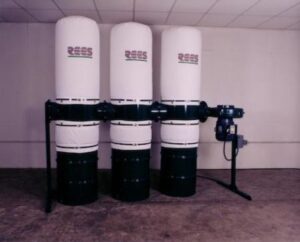Woodworking is a craft that delights both professionals and hobbyists alike. However, the creation of beautiful wooden masterpieces often comes with a less glamorous side effect: dust. The accumulation of fine wood particles not only creates a messy workspace but also poses serious health hazards. This is where dust collection systems come into play. In this article, we will delve into the importance of dust collection systems in woodworking, highlighting their benefits, key considerations, and the steps involved in implementing an effective system.
The Hazards of Woodworking Dust

Woodworking generates a significant amount of dust, consisting of fine particles that become airborne and settle on surfaces throughout the workshop. These particles may include sawdust, wood chips, and microscopic wood fibers. While the mess they create is evident, the health risks associated with woodworking dust are often overlooked.
Inhalation of wood dust can lead to respiratory issues such as allergies, asthma, and even serious lung diseases like chronic obstructive pulmonary disease (COPD). Furthermore, certain wood species release toxic substances, making exposure to their dust even more hazardous.
The Benefits of Dust Collection Systems in Woodworking Shops
Implementing dust collection systems in woodworking brings a multitude of benefits. First and foremost, it promotes a healthier work environment by effectively capturing and removing airborne wood particles. This helps prevent respiratory ailments among woodworkers, ensuring their long-term well-being.
Moreover, a dust collection system helps maintain a clean and organized workspace. By reducing dust accumulation on surfaces and equipment, it minimizes fire hazards and potential damage to sensitive machinery. Additionally, a cleaner environment allows for better visibility, enhancing safety and precision during woodworking operations.
Choosing the Right Dust Collection System
Selecting the appropriate dust collection system is crucial for optimal performance in woodworking. Factors to consider include the size of the workshop, the type of woodworking operations performed, and the volume of dust generated.
A system should be equipped with efficient features such as low-pressure fans, filters, cyclones, and airlocks. These components work together to ensure effective dust capture, filtration, and containment. Additionally, consider the system’s capacity, airflow requirements, and the ease of maintenance.
Implementing an Effective Dust Collection System

Successful implementation of a dust collection system involves a systematic approach. Begin with a thorough assessment of the workshop’s dust characteristics, machine locations, and waste volume rates. This information will aid in determining the ideal placement of the dust collector, conveying velocity, and CFM requirements.
Next, design a well-structured piping layout to facilitate efficient dust transfer. Consider factors such as static pressure, fan size, and the appropriate type and size of the dust collector. Ensure the system design aligns with the specific needs and goals of your woodworking operations.
Once the system design is finalized, develop a comprehensive proposal that includes equipment specifications, piping layout, and any customer-provided materials. After obtaining approval, proceed with fabricating the necessary components, including dust collectors, pipes, fittings, and structural supports.
During installation, work closely with the customer to address electrical and concrete requirements. Schedule the shipment of materials and coordinate fieldwork based on the customer’s schedule. Arrange for necessary equipment such as cranes or manlifts to facilitate safe and efficient installation.
Ensuring Continued Performance
Following installation, it is crucial to conduct a thorough follow-up. Use a system installation checklist to ensure that all components are functioning correctly. Confirm customer satisfaction and address any concerns or adjustments that may be necessary.
Regular maintenance and periodic inspections are vital to sustain the performance of the dust collection system. This includes cleaning or replacing filters, monitoring airflow, and promptly addressing any issues that may arise. By maintaining the system’s efficiency, you guarantee a safe and healthy working environment for woodworkers.
Dust collection systems in woodworking play a vital role, providing a healthier and safer environment for woodworkers while maintaining the integrity of equipment and surfaces. By implementing an effective system and prioritizing regular maintenance, woodworking enthusiasts can enjoy their craft without compromising their health or workspace.

